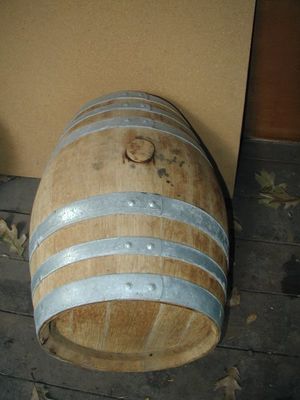Oak barrel: Difference between revisions
Jump to navigation
Jump to search
Uncle Jesse (talk | contribs) (Recreating page from http://web.archive.org/web/20100706220059/http://wiki.homedistiller.org/Oak_barrels) |
Uncle Jesse (talk | contribs) m (Uncle Jesse moved page Oak barrels to Oak barrel: Singular not plural) |
(No difference)
| |
Revision as of 20:45, 22 August 2017
White American oak is the most commonly used Oak for barrels, though French and Hungarian oak are both high quality and can be used with excellent results.
There are three processes that occur when oak barrels are used to age spirits:
- Evaporation of spirit through dry section of barrel
- Leaching of oak chemicals into spirit
- Diffusion of spirits through barrel
Although some barrels are new oak, many have been modified somehow:
If you can not store your spirit for years in a 55 gallon oak barrel, there are some alternatives which provide a reasonable approximation of barrel aging:
- Put oak chips in your spirit bottle
- Put charred oak chips in your bottles to simulate bourbon
- Stopper your bottles with a dry cork to promote evaporation
- Add sherry to you spirit
During the maturation process in oak barrels, some of the following chemical changes occur in the spirit:
- The aldehyde level changes
- The color changes
- The concentration of esters changes
- The acidity changes
- The concentration of furfural changes
- The concentration of fusel oils change
- The pH changes
- The amount of solids change
- The proof changes
- The concentration of tannins change
- The total acidity changes
